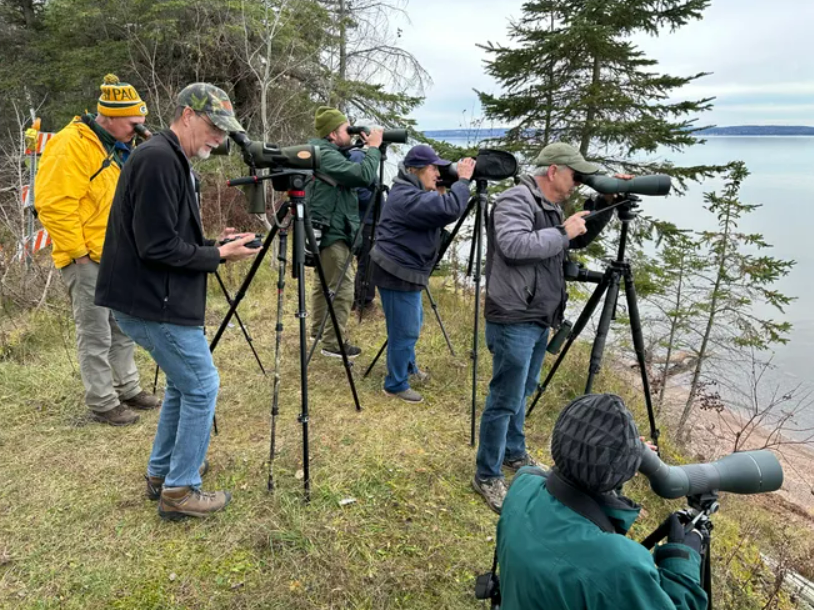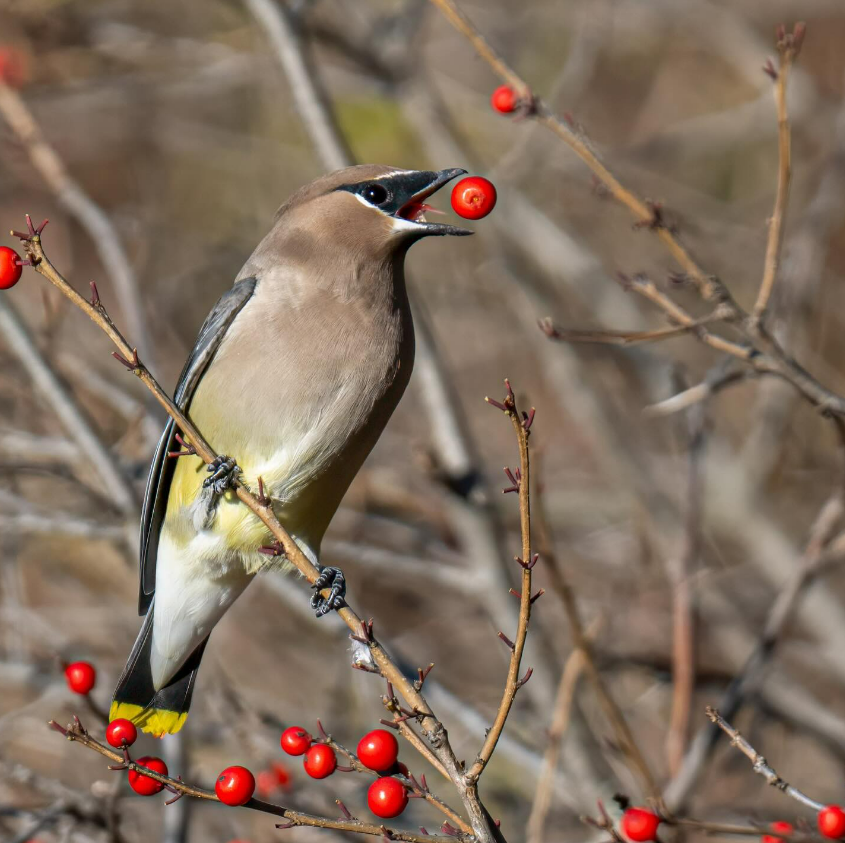National survey: 1 in 3 U.S. adults reports watching birds
Broad-based appeal a good foundation for recovery of declining songbirds
MADISON - Flocks of people trekking to glimpse birds rarely seen in Wisconsin – Roseate Spoonbills in Green Bay, American Flamingos in Port Washington, and Ancient Murrelets wowing them in Ashland and Sturgeon Bay – are one sign of bird-watching’s popularity in Wisconsin and the United States.
Another has flown mostly under the radar: National recreation survey results released in October 2023 by the U.S. Fish & Wildlife Service show 96.3 million people, 37% of Americans 16 and over, reported closely observing, feeding or photographing birds in 2022.
That’s more than 1 in 3 adults following our feathered friends, and it’s the largest component of the 148.3 million people, or 57% of the U.S. population 16 and older, who reported wildlife watching in 2022, according to the 2022 National Survey of Fishing, Hunting and Wildlife-Associated Recreation.
Wildlife watching as defined in the survey includes closely observing or trying to identify birds or other wildlife at home or more than 1 mile away; photographing them; and feeding them or maintaining natural areas or plantings primarily to benefit them.
In the same year, 39.9 million adults, 15%, fished in freshwater and saltwater combined; hunters numbered 14.3 million, 6%; 46.2 million participated in recreational target shooting, and 47.3 million Americans participated in motorized boating in 2021, according to the survey. (this last number included people 6 and older)
Wildlife watchers spent $250.2 billion and notched nearly 13 billion days pursuing their activities. Anglers spent $99.4 billion and 785 million days, and hunters spent $45.2 billion and 241 million days.
“These national survey results show Americans love birds and spend significant amounts of time and money enjoying them and caring for them,” says Karen Etter Hale, who chairs the Wisconsin Bird Conservation Partnership, WBCP, a collaboration of 180 conservation groups committed to sustaining Wisconsin's native birds.
"Birds are critical for healthy ecosystems, for our economy and for our quality of life, so we're very happy to see participation rates continue to remain so high."
State specific results were not included in the 2022 report, and the Service cautions against directly comparing results to any previous national surveys due to major changes in questions and methodology. In the 2016 survey, 45.1 million (18%) reported watching birds and 47 million, or 20%, reported watching birds in 2011, when Wisconsin ranked second in participation at 33%.
Lisa Gaumnitz, who coordinates SOS Save Our Songbirds, an initiative of the Wisconsin Bird Conservation Partnership to spur more action at home to help birds, said the results show there’s a strong foundation for restoring songbirds.
The survey estimated that wildlife watchers spent $89.5 billion on land leasing and ownership, plantings for the benefit of wildlife, membership dues and contributions, and magazines, books, and DVDs.
Scientists consider habitat loss as the biggest reason why nearly 1 of 3 North American birds has vanished since 1970. Songbirds including warblers, finches, sparrows and blackbirds are among the bird groups suffering the biggest losses.
“Our birds are in trouble,” Gaumnitz says. “The survey results suggest that if everyone of us who enjoys watching wildlife planted a few native trees, shrubs and wildflowers, together we could make a big difference for our birds and other wildlife.”
Planting native plants benefitting birds is one of three actions the SOS Save Our Songbirds campaign asks people to take at home. The others are preventing birds from colliding with a problem home window, and for coffee drinkers, to buy and drink shade-grown, organic coffee a few days a week to protect Wisconsin songbirds’ winter habitat in Central and South America.A
Cross section of Americans watch birds and other interesting survey findings
The survey has been conducted every five years since 1955 to gauge fishing and hunting participation; wildlife watching questions were added in 1980 and recreational target shooting and motorized boating questions last year.
While the 2022 results aren’t directly comparable to previous surveys, they confirm that wildlife watching, of which birds are the biggest focus, has broad-based appeal.
95 percent (91.1 million) of the birdwatchers observed wild birds around home
44 percent of birdwatchers, or 42.6 million adults, took trips at least 1 mile away from home to observe wild birds
Of the 146.5 million around-the-home wildlife watchers, 50% were male, 48 percent female, and 1 percent identified as other.
64% of the Asian-American population engaged in around-the-home wildlife watching, 60% of the White population, 45% of the African American population, and 53 percent of individuals composing the “other” race category.
Participation rates in wildlife-watching ranged from 44 percent among U.S. residents living in households earning less than $10,000 per year to 62 percent of those living in households earning $150,000 to $199,999 annually.
60% of wildlife watchers reported spending $24.6 billion on binoculars and spotting scopes, photographic equipment, wild bird food, nest boxes, bird houses, bird baths and other “wildlife watching equipment” owned
primarily for observing, photographing, or feeding wildlife.



